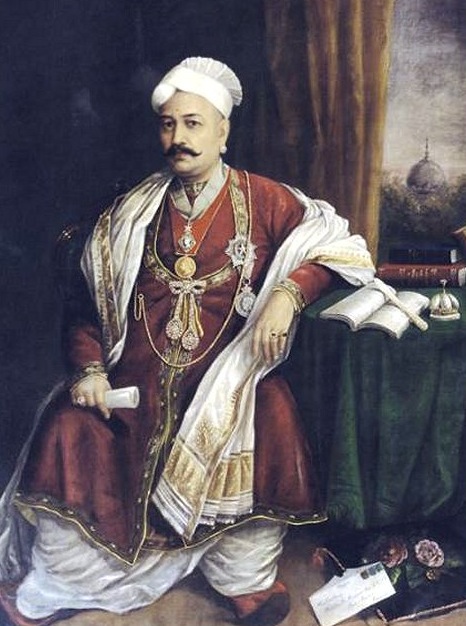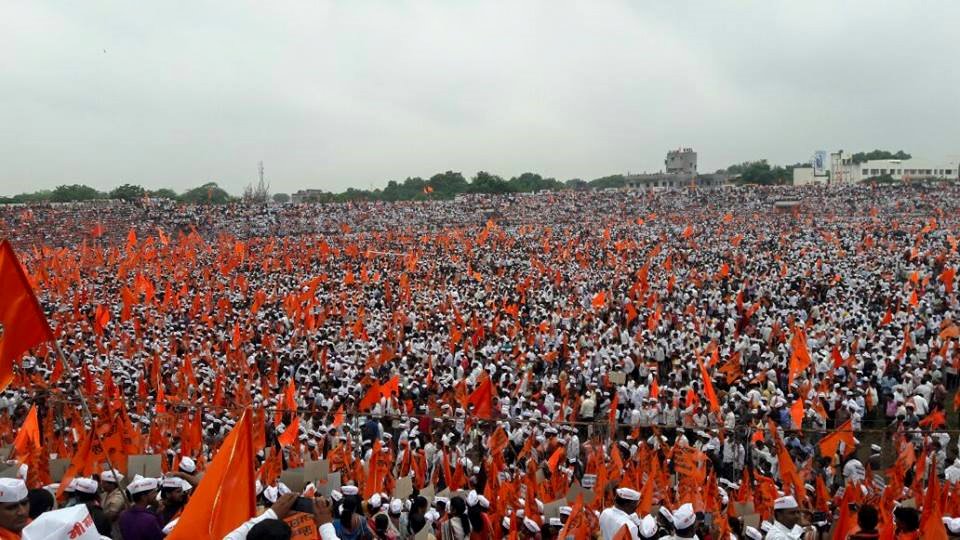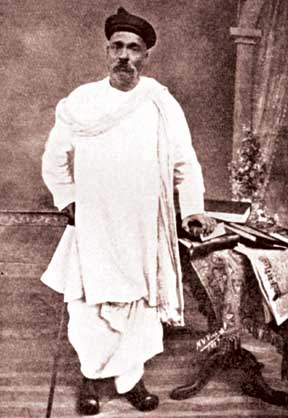|
Deshmukh
Deshmukh (IAST:Dēśamukh) is a historical title conferred to the rulers of a . It is used as a surname in certain regions of India, especially in the states of Maharashtra, Karnataka and Telangana and also in Andhra Pradesh and northern parts of Madhya Pradesh and Gujarat, Goa whose family received it as a title. Etymology In Sanskrit, ''Deśa'' means land, country and ''mukha'' means head or chief; thus, ''deshmukh'' means "the head" of a district. Deshmukh as a title Local office Deshmukh was a historical title given to a person who was granted a territory of land, in Maharashtra, Karnataka, Telangana, Andhra Pradesh and Chhattisgarh. The granted territory was usually referred to as the Dēśamukhi. The Deshmukh was in effect the ruler of the territory, as he was entitled to a portion of the collected taxes. It was also his duty to maintain the basic services in the territory, such as police and judicial duties. It was typically a hereditary system. The title of Deshmukh ... [...More Info...] [...Related Items...] OR: [Wikipedia] [Google] [Baidu] |
Deshastha Brahmin
Deshastha Brahmin is a Hinduism, Hindu Brahmin caste, subcaste mainly from the Indian state of Maharashtra and North Karnataka. Other than these states, according to authors K. S. Singh, Gregory Naik and Pran Nath Chopra, Deshastha Brahmins are also concentrated in the states of Telangana , Andhra Pradesh and Madhya Pradesh Historian Pran Nath Chopra and journalist Pritish Nandy say, "Most of the well-known saints from Maharashtra, Karnataka and Combined Andhra Pradesh, Andhra Pradesh were Deshastha Brahmins". The mother tongue of Deshastha Brahmins is either Marathi language, Marathi or Kannada language, Kannada. Over the millennia, the Deshastha community has produced Mathematicians such as Bhāskara II, Sanskrit scholars such as Bhavabhuti, Satyanatha Tirtha, Satyadharma Tirtha; Bhakti movement, Bhakti saints such as Dnyaneshwar, Eknath, Purandara Dasa, Samarth Ramdas and Vijaya Dasa; polemical logician such as Jayatirtha and non-polemical scholar such as Raghuttama Tirth ... [...More Info...] [...Related Items...] OR: [Wikipedia] [Google] [Baidu] |
Maharashtra
Maharashtra () is a state in the western peninsular region of India occupying a substantial portion of the Deccan Plateau. It is bordered by the Arabian Sea to the west, the Indian states of Karnataka and Goa to the south, Telangana to the southeast and Chhattisgarh to the east, Gujarat and Madhya Pradesh to the north, and the Indian union territory of Dadra and Nagar Haveli and Daman and Diu to the northwest. Maharashtra is the second-most populous state in India, the third most populous country subdivision in South Asia and the fourth-most populous in the world. The state is divided into 6 divisions and 36 districts. Mumbai is the capital of Maharashtra due to its historical significance as a major trading port and its status as India's financial hub, housing key institutions and a diverse economy. Additionally, Mumbai's well-developed infrastructure and cultural diversity make it a suitable administrative center for the state, and the most populous urban are ... [...More Info...] [...Related Items...] OR: [Wikipedia] [Google] [Baidu] |
Maratha (caste)
The Maratha caste is composed of Maratha clan system, 96 clans, originally formed in the earlier centuries from the amalgamation of families from the peasant (Kunbi), shepherd (Dhangar), blacksmith (Lohar (caste), Lohar), pastoral (Gavli), carpenter (Sutar), Bhandari caste, Bhandari, Thakar (caste), Thakar and Kolis, Koli castes in Maharashtra. Many of them took to military service in the 16th century for the Deccan sultanates or the Mughals. Later in the 17th and 18th centuries, they served in the armies of the Maratha Kingdom, founded by Shivaji, a Maratha Kunbi by caste. Many Marathas were granted hereditary fiefs by the Sultanates, and Mughal Empire, Mughals for their service."The name of the 'caste-cluster of agriculturalists-turned-warriors' inhabiting the north-west Dakhan, Mahārās̲h̲tra 'the great country', a term which is extended to all Marāt́hī speakers": According to the Maharashtrian historian B. R. Sunthankar, and scholars such as Rajendra Vora, the "Ma ... [...More Info...] [...Related Items...] OR: [Wikipedia] [Google] [Baidu] |
Dhangar
The Dhangars are caste of people found in the Indian states of Maharashtra, northern Karnataka, Goa, Madhya Pradesh . They are referred to as Gavli Dhangars in northern Maharashtra ( Khandesh region) and the forested hill tracts of India's Western Ghats, there are many distinct Gavli castes in Maharashtra and Dhangar Gavli is one of them. History Etymology The word "''Dhangar''" is inscribed in a Buddhist cave in Pune district of Maharashtra. It is believed that this inscription has its origin between the first and the third century AD. Multiple theories have been proposed for the origin of the word Dhangar. It may be associated with a term for "cattle wealth". Bhagwan Lal Indraji maintains that it is derived from Sanskrit word Dhang which means hill. Syed Siraj-Ul-Hassan noted that some people of his time believed the term to come from the Sanskrit "''dhenugar''" ("cattle herder") but dismissed that etymology as being "fictitious". In Kannada, the word Danagãra means co ... [...More Info...] [...Related Items...] OR: [Wikipedia] [Google] [Baidu] |
Hatkar
Hatkar is a Hindu caste found in Deccan region of India. Their home language is Marathi. However, Bargi is a distinct sub-caste from Hatkar Dhangar. Hatkar (हातकर) is also a surname used by Saraswat Brahmins in Maharashtra, which is entirely different from the Hatkar (हटकर) caste. The Hatkar caste belongs to a nomadic community. People of this caste keep cattle, buffaloes, bulls, goats, sheep, and other domestic animals. Their main occupation is agriculture. Hatkar caste members primarily reside in the Marathwada and Vidarbha regions of Maharashtra. History Medieval Era The Ain-i-Akbari describes Hatkars as being "a proud, refractory and domineering race of Marathas, living in the Basim Sircar and, with numerous armed forces, occupying the forts and controlling the surrounding districts". Furthermore, It mentions a Hatkar force of 1,000 cavalry and 5,000 infantry. Hatkars were in the army of Shivaji in large numbers and were known for their bravery in th ... [...More Info...] [...Related Items...] OR: [Wikipedia] [Google] [Baidu] |
Madhya Pradesh
Madhya Pradesh (; ; ) is a state in central India. Its capital is Bhopal and the largest city is Indore, Indore. Other major cities includes Gwalior, Jabalpur, and Sagar, Madhya Pradesh, Sagar. Madhya Pradesh is the List of states and union territories of India by area, second largest Indian state by area and the List of states and union territories of India by population, fifth largest state by population with over 72 million residents. It borders the states of Rajasthan to the northwest, Uttar Pradesh to the northeast, Chhattisgarh to the east, Maharashtra to the south, Gujarat to the west. The area covered by the present-day Madhya Pradesh includes the area of the ancient Avanti (India), Avanti Mahajanapada, whose capital Ujjain (also known as Avantika) arose as a major city during the second wave of Indian urbanisation in the sixth century BCE. Subsequently, the region was ruled by the major dynasties of India. The Maratha Confederacy, Maratha Empire dominated the maj ... [...More Info...] [...Related Items...] OR: [Wikipedia] [Google] [Baidu] |
Telangana
Telangana is a States and union territories of India, state in India situated in the Southern India, south-central part of the Indian subcontinent on the high Deccan Plateau. It is the List of states and union territories of India by area, eleventh largest state by area and the List of states and union territories of India by population, twelfth most populated state in India, according to the 2011 Census of India, 2011 census. On 2 June 2014, the area was separated from the northwestern part of United Andhra Pradesh as the newly formed States and union territories of India, state of Telangana, with Hyderabad as its capital. Telugu language, Telugu, one of the classical languages of India, is the most widely spoken and the primary official language of Telangana state, whereas Urdu is recognised as the second official language. Additionally, several tribal languages such as Gondi, Kolami, Koya and Lambadi are spoken in different regions of the Telangana state. The economy of ... [...More Info...] [...Related Items...] OR: [Wikipedia] [Google] [Baidu] |
Koli People
The Koli is an Indian caste that is predominantly found in India, but also in Pakistan and Nepal. Koli is an agriculturist caste of Gujarat but in coastal areas they also work as fishermen along with agriculture. In the beginning of 20th century, the Koli caste was recognised as a denotified tribe under Criminal Tribes Act by the British-Indian Government because of their anti-social activities during World War I. The Koli caste forms the largest caste- cluster in Gujarat and Himachal Pradesh, comprising 24% and 30% of the total population in those states respectively. History Early There has historically been some difficulty in identifying people as Koli or as Bhil people in what is now the state of Gujarat. The two communities co-existed in the hills of that area and even today there is confusion regarding their identity, not helped, in the opinion of sociologist Arvind Shah, by there being "hardly any modern, systematic, anthropological, sociological or historica ... [...More Info...] [...Related Items...] OR: [Wikipedia] [Google] [Baidu] |
Maratha Emperors
Chhatrapati is a royal title from Sanskrit used to denote a king. The word "Chhatrapati" is a Sanskrit language compound word of '' chhatra'' (''parasol'' or ''umbrella'') and '' pati'' (''master/lord/ruler''). This title was used by the House of Bhonsle, between 1674 and 1818, as the heads of state of the Maratha Empire and later by the states of Satara and Kolhapur. List of Chhatrapatis of the Maratha Empire * Shivaji I *Sambhaji * Rajaram I *Shivaji II *Shahu I * Rajaram II * Shahu II * Pratap Singh of Satara See also * List of Maratha rulers * House of Bhonsle * Maratha Empire * Maratha The Marathi people (; Marathi: , ''Marāṭhī lōk'') or Marathis (Marathi: मराठी, ''Marāṭhī'') are an Indo-Aryan ethnolinguistic group who are native to Maharashtra in western India. They natively speak Marathi, an Indo-A ... * Maratha titles Notes References * V. S. Kadam, 1993. ''Maratha Confederacy: A Study in Its Origin and Development''. Munshir ... [...More Info...] [...Related Items...] OR: [Wikipedia] [Google] [Baidu] |
Lingayatism
The Lingayats are a Monotheism, monotheistic religious denomination of Hindu denominations, Hinduism. Lingayats are also known as , , , . Lingayats are known for their unique practice of Ishtalingam, Ishtalinga worship, where adherents carry a personal linga symbolizing a constant, intimate relationship with Parashiva.Ramanujan, A. K. (Ed.) (1973). Speaking of Śiva (Vol. 270). Penguin. A radical feature of lingayats is their staunch opposition to the caste system and advocacy for social equality, challenging societal norms of the time. Its philosophical tenets are encapsulated in Vachanas, a form of devotional poetry. The tradition also emphasizes Kayaka (work) and Dasoha (service) as forms of worship, underscoring the sanctity of labor and service to others. Unlike mainstream Hinduism, Lingayats reject scriptural authority of vedas, puranas, superstition, Hindu astrology, astrology, vedic priesthood ritualistic practices, and the concept of rebirth, promoting a direct, persona ... [...More Info...] [...Related Items...] OR: [Wikipedia] [Google] [Baidu] |
Chitpavan Brahmin
The Chitpavan Brahmin or the Kokanastha Brahmin is a Hindu Maharashtrian Brahmin community inhabiting Konkan, the coastal region of the state of Maharashtra. Initially working as messengers and spies in the late seventeenth century, the community came into prominence during the 18th century when the heirs of Peshwa from the Bhat family of Balaji Vishwanath became the de facto rulers of the Maratha empire. Until the 18th century, the Chitpavans were held in low esteem by the Deshastha, the older established Brahmin community of Karnataka-Maharashtra region. As per Jayant Lele, the influence of the Chitpavans in the Peshwa era as well as the British era has been greatly exaggerated because even during the time of the most prominent Peshwas, their political legitimacy and their intentions were not trusted by all levels of the administration, not even by Shivaji's successors. He adds that after the defeat of Peshwas in the Anglo-Maratha wars, Chitpavans were one of the Hindu co ... [...More Info...] [...Related Items...] OR: [Wikipedia] [Google] [Baidu] |




